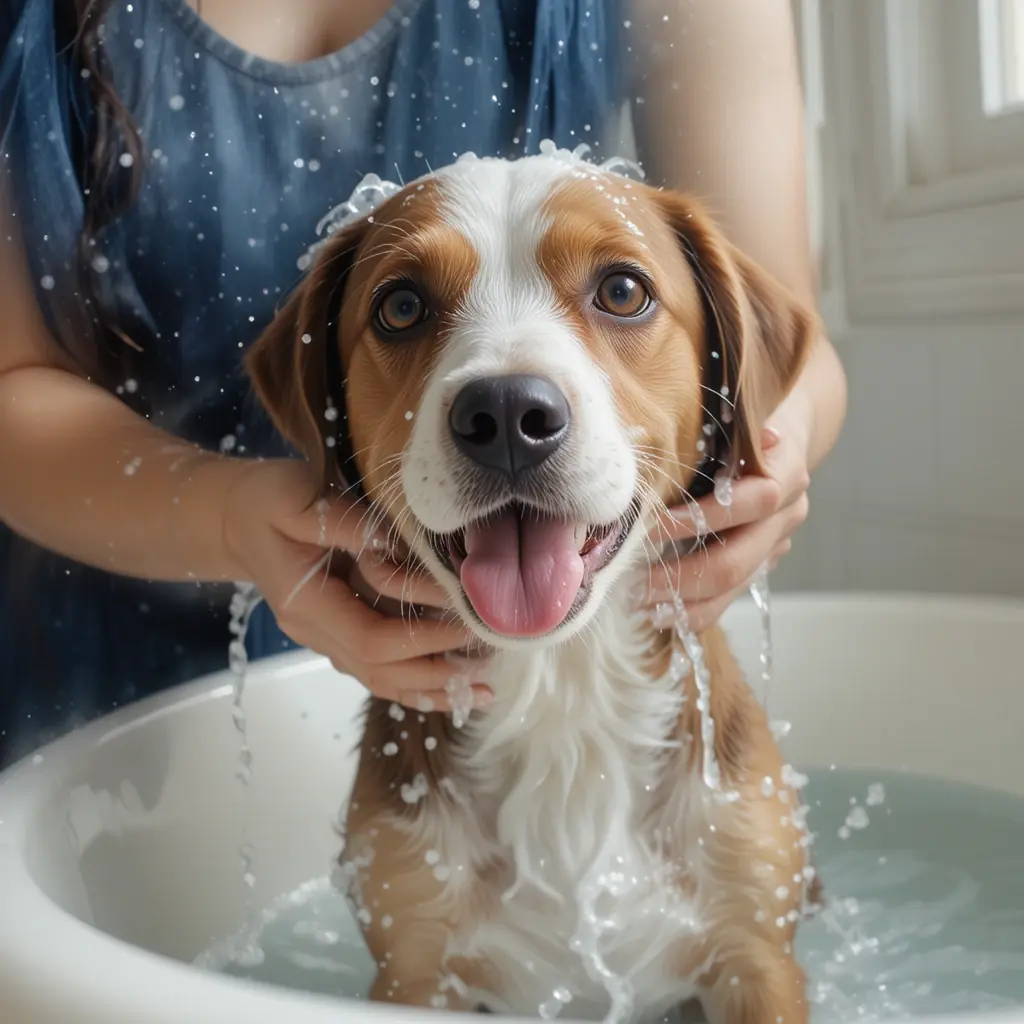Bathing is essential for the overall health of your dog. Bathing frequency depends on several factors. The factors include their breed, coat type, activity level, and skin conditions. You should decide how often should you bathe your dog depends on these factors. While some dogs thrive with frequent baths, others can go months without needing one.
Striking the right balance is key to maintaining their natural skin oils while keeping them fresh and odor-free. This guide will help you determine the ideal bathing schedule for your dog based on their unique needs.
Bathing Frequency for Your Dog
Bathing your dog keeps the coat clean, removes dirt, debris, and oils. It prevents matting and tangling, and skin irritation. Bathing frequency of your dog depends on factors such as breed, coat type, activity level, and overall health.
Bathing Frequency for Breed and Coat Type
Understanding your dog’s breed and coat type is essential for determining the right bathing frequency. Each type of coat has unique needs, and over- or under-bathing can affect your dog’s skin and coat health. Here’s a more detailed breakdown:
Short-haired Breeds: Beagles, Boxers, Dobermans and other short-haired dogs generally require baths less frequently than long-haired breeds. Bathing frequency of once in every 1–3 months is enouth. They have a smooth, low-maintenance coat that doesn’t trap as much dirt or debris. Their natural oils help keep their skin and coat healthy. over-bathing can strip these oils. If they roll in something smelly, you can bathe them sooner.
Double-coated Breeds: Golden Retrievers, Siberian Huskies, German Shepherds and other long-haired dogs typically require more work to groom and more frequent dog baths. They should be bathed every four weeks at minimum. Long-haired and double-coated breeds develop tangles and mats. Their undercoat may trap dirt, oils, and allergens, which can lead to odors or irritation. Focus on brushing as the primary grooming tool. Over-bathing can dry out their coat.
Hairless Breeds: Chinese Crested, Xoloitzcuintli, American Hairless Terrier and other hairless breeds should be bathed more often than other breeds. They should be bathed at least weekly. This is because hairless dogs lack a coat to absorb natural skin oils. This leads to oily buildup, clogged pores, and skin irritation. Use a gentle, moisturizing shampoo to prevent over-drying.
Dogs with Oily Coats: Basset Hounds, Labrador Retrievers and other breeds with oily coats might need to be bathed more often. The ideal bathing frequency for them is once every 3–4 weeks. Breeds with naturally oily coats produce huge amount of sebum. This leads to doggy odor. Regular baths help control oil buildup and keep their skin healthy.
Activity Level and Lifestyle
A dog’s daily activities play a significant role in their bathing frequency. Active dogs need bathing frequently.
Active Dogs: Some dogs spend a lot of time outdoors. For them, bathing frequency ranges from once a week to every few weeks. These dogs are more likely to accumulate mud, allergens, and debris in their coat during playtime. Bathing helps remove these substances, and reduce odors and preventing skin irritation caused by allergens or parasites.
Less Active Dogs: Some dogs spend most of their time indoors. Choose a bathing frequency for them once every 1–3 months. These sedentary dogs are less likely to get dirty and pick up allergens, mud, and odors. Brushing and spot cleaning are sufficient between baths to maintain their hygiene.

Bathing Frequency Depending on Skin Conditions
Some skin conditions require a more tailored approach to bathing. Skin issues differ widely. Allergies, skin infections, and excessively oily or dry skin increase bathing needs. A regular bathing routine with appropriate products help manage symptoms and improve your dog’s comfort.
Skin Conditions with Allergies: Bath your dog weekly. This is recommended for dogs with itchy skin, especially if you are using a medicated shampoo. Dogs with environmental allergies (e.g., pollen, dust mites) can benefit from regular baths to remove allergens from their coat and skin. For dogs with mild itching or sensitive skin, less frequent baths are appropriate.
Use hypoallergenic or soothing shampoos. Shampoos that contain oatmeal, aloe vera, and chlorhexidine is prescribed.
Dry Skin: Bathing frequency for dogs with dry skin is once in every 4–6 weeks. Regular baths with moisturizing shampoos help hydrate the skin and reduce flakiness. Use shampoos designed for dry skin. These shampoos are enriched with coconut oil, omega fatty acids, or colloidal oatmeal. Avoid hot water during the bath.
Seborrhea (Oily or Dry): A bathing frequency of weekly or biweekly is preferred. Because Seborrhea causes excessive oiliness and flakiness of the skin. This leads to dandruff, and secondary infections. Frequent baths with medicated shampoos help remove excess oil, manage scales, and treat any underlying conditions. Medicated shampoos with sulfur, salicylic acid, and benzoyl peroxide are commonly used.
Hot Spots: Hot spots are inflamed, moist areas of the skin that require careful cleaning to prevent infection. Bathing help cleanse the surrounding area. Clean hot spots with vet-approved antiseptic solutions. If frequent baths are needed, use a mild medicated shampoo to avoid further irritation.
Skin Infections: Yeast infections, and bacterial infections require weekly or more frequently bathing under veterinary guidance. Medicated baths can directly address the infection. For mange or severe infections, additional treatments may be necessary. Always consult with your vet to determine the best bathing routine.
Bathing Frequency of Dogs Differs on the Season
A dog’s bathing schedule changes with seasons.
Spring: Bathe your dog once in every 4–6 weeks. Spring is shedding season for many breeds. Double-coated dogs lose their winter fur during spring. Bathing during this time helps remove dead hair. Muddy conditions from spring rains also require more frequent baths. Combine baths with regular brushing to manage seasonal shedding.
Summer: Bathe every 3–4 weeks or more frequently if needed. Dogs are more active outdoors in summer. This exposure can lead to a smelly coat. After swimming in chlorinated pools, rinse your dog thoroughly.
Fall: Bath in every 4–6 weeks is enough for your dog. During this time, dogs spend less time outdoors. Focus on brushing during this season to remove loose fur and debris. You can do this to reduce the need for frequent baths.
Winter: In winter, dogs need less bathing. Bathing in every 6–8 weeks is enough. They, generally, do not get dirty in winter season. Additionally, bathing too often in winter can dry out their skin. Bathe them when necessary. Use lukewarm water. Pay special attention to their paws for cleaning.
You have now found out the right bathing frequency for your dog. Always use dog-friendly products when bathing and consult your veterinarian for advice if your dog has special grooming needs. With proper care, your dog will enjoy the benefits of a shiny coat, healthy skin, and plenty of cuddles.




